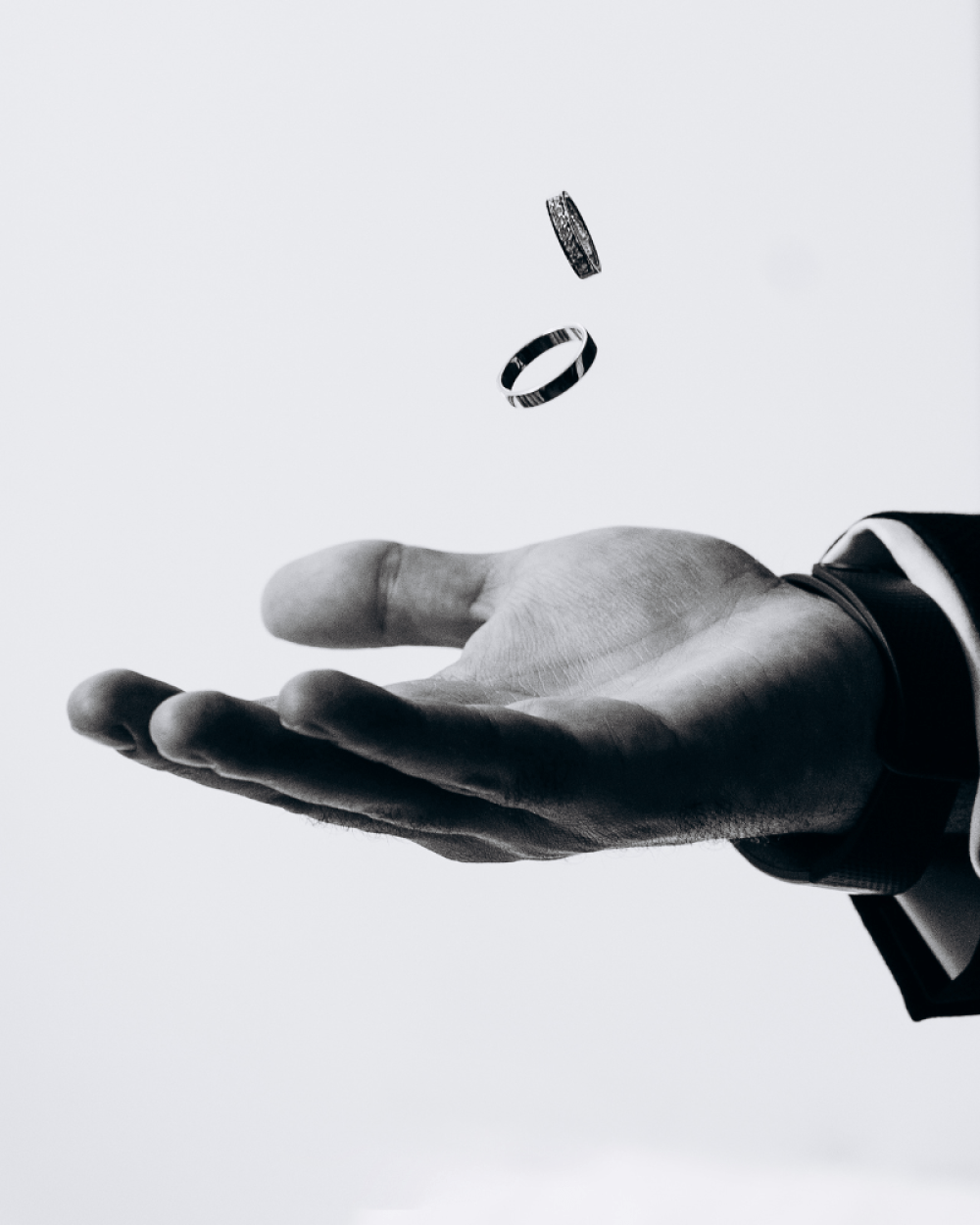Why men wear wedding rings - and other surprisingly modern ‘traditions’

Ever wondered why engagement rings are usually diamonds or why certain gems are tied to specific anniversaries?
Up until the mid-twentieth century, marriage was usually a simple affair comprised of inexpensive customs. Today’s extravagant marriage rituals developed in America before spreading across the western world and beyond.
How these customs developed and spread is a fascinating story – and one in which jewellery retailers played a leading role.
How diamonds took over
Traditionally, diamonds were just one of many gemstones used in engagement rings, with rubies, sapphires, and emeralds all popular choices. Today, 97% of engagement rings are adorned with diamonds[1]. How did this dominance come about?
In the Great Depression of the 1930s, the diamond dealer De Beers worried that couples would spurn diamonds in favour of cheaper alternatives. The company embarked upon a long-term, marketing campaign. It would indelibly link diamonds with engagement in the public mind, ensuring diamonds became the stone of choice.
Through advertising and funding Hollywood movies, De Beer’s marketing filtered into popular culture. Their 1947 slogan ‘a diamond is forever’ entered the common lexicon. Meanwhile, the diamond giant’s funding of 1953’s A Gentleman Prefers Blondes starring Marilyn Monroe made ‘diamonds are a girl’s best friend’ a household phrase[2].
The invention of the male wedding ring
While brides have worn engagement and wedding rings for centuries, grooms usually did not.
In the 1920s, some jewellers attempted to change this, marketing engagement rings to men. Despite macho product names like “The Pilot,” and “The President”, they sold poorly. However, jewellers would go on to have more success promoting another type of ring.
At the outset of World War 2, jewellers spotted an opportunity to promote wedding bands to men fighting overseas.
Not only were wedding rings a comforting reminder of a soldier’s wife and family back home, they were marketed as symbols of democracy and the nuclear family – the very ideals the troops were fighting for.
Celebrity endorsements from stars including Humphrey Bogart helped push the trend into the mainstream. While just 15% of grooms received a wedding ring prior to the 1940s, the figure increased to 80% by the end of the decade[3].
The evolution of anniversary gifts
In the 1800s, the question of what to buy as an anniversary gift was simple. Gold or silver – and only for the 25th and 50th years. Beyond that, anniversaries were not generally celebrated.
Nowadays, we have both a ‘traditional’ and ‘modern’ list to choose from, making selecting the right gift more complex.
First popularised by Emily Post in her bestselling 1922 book Etiquette[4], the traditional list includes paper, cotton, leather, silk, and wood for the first five years. Pearls, coral, emerald, and ruby feature upon five year intervals between the 30th and 45th anniversaries, while diamonds are given for the 65th.
The modern list was released in 1937 by the American National Retail Jewellers Association[5]. Hoping to help their members sell more products during the Great Depression, their list included gifts of jewellery in addition to the traditional anniversaries. For example, diamonds were suggested again for both the 10th and 30th anniversaries while gold made an extra entry for the 14th.
Not all the modern gifts are for jewellery – practical gift ideas include desk sets and appliances. However, to ensure a happy anniversary, jewellery is always a safe bet.
Precious jewellery requires quality insurance
While these traditions are relatively modern, they are no less meaningful.
According to the University of California’s Saul Levine, rituals and customs strengthen group bonds[6]. By exchanging rings or anniversary gifts, couples demonstrate their commitment to each other, reaffirming their devotion. Such items are our most valued possessions – both financially and sentimentally.
Lost or damaged jewellery can never be replaced, but quality insurance can help make the loss easier.
Under our Private Client policy, jewellery is covered up to €10,000 – useful if your client owns valuable engagement rings and anniversary gifts.
Our valuables coverage has high single limits of €25,000 for unspecified jewellery in collections, which would be higher than some standard market policies.
Clients may find the perfect piece of jewellery when they are on holiday. DUAL is a useful partner here, too. We cover newly acquired items up to 30% for 90 days, protecting your clients for their journey home.
